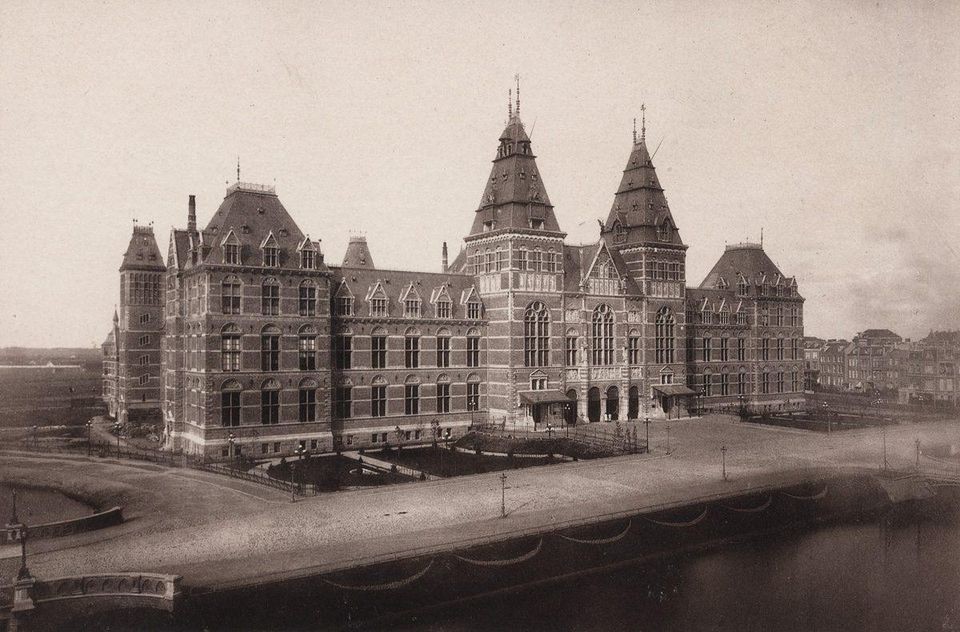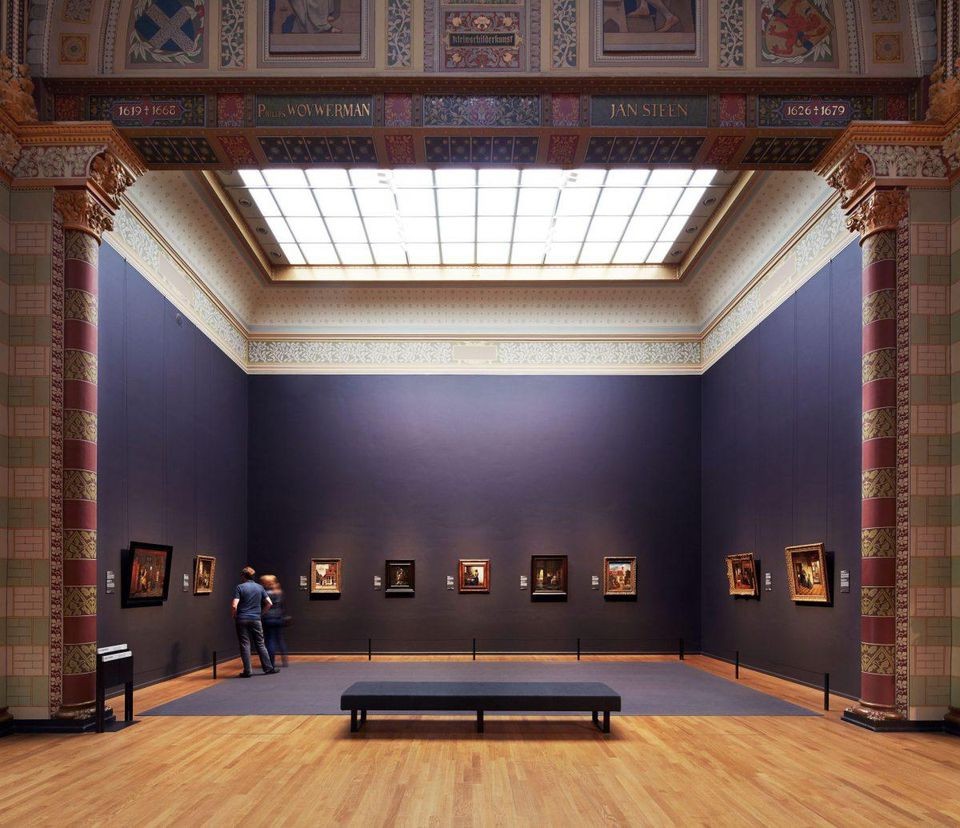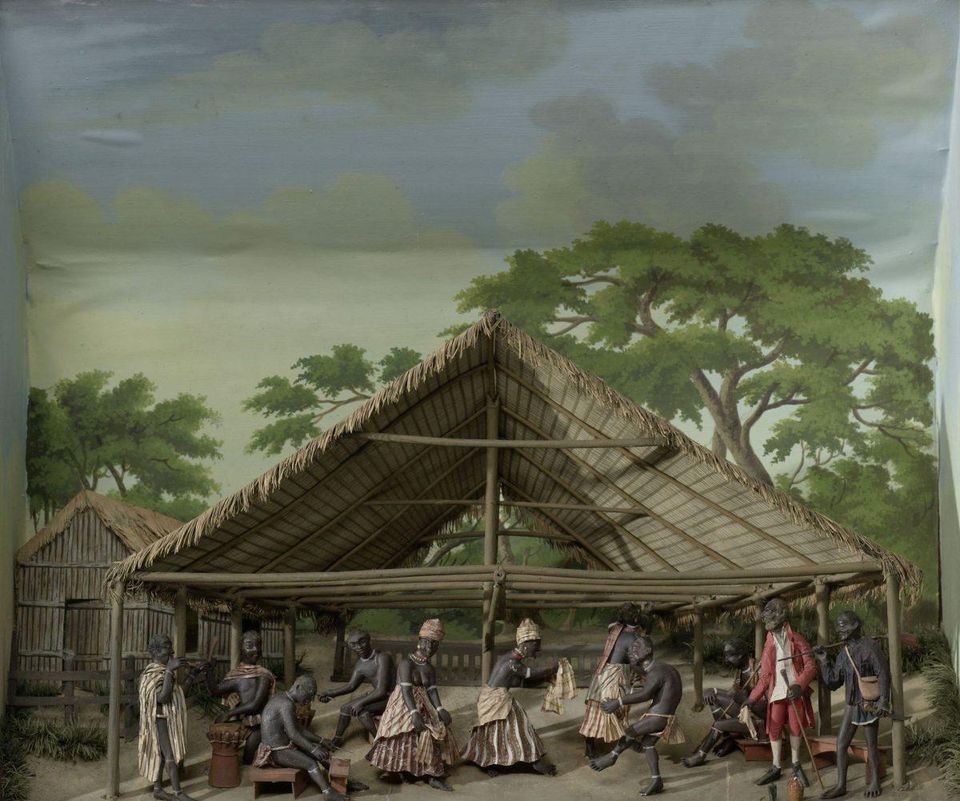In 2018, the Rijksmuseum – the Amsterdam-based national museum dedicated to art and history of the Netherlands – welcomed more than 2.3 million visitors.
This doesn’t come as a surprise to me. My office is at a stone’s throw from the Rijksmuseum and when I pass by (or, as it’s often the case, cycle by), I always see throngs of tourists making their way to the museum’s entrance.
But 200 years ago, when they started to spawn across Europe, national museums weren’t founded just to issue entrance tickets. They were also established to celebrate national pride, to represent the DNA of national identity.
At the time, nation-states were emerging from the ashes of ancient regimes and decaying empires. Nationalism was a propulsive force of progress and political development.
At the opposite, the comeback of nationalism in contemporary Europe is under the sign of conservatism. The nationalist political parties of today’s Europe fight against the disruptive force of new political institutions like the European Union.
What can then be the role of national museums in this time of rampant nationalism? What’s left of “national” in contemporary national museums? And, more in general, how can national museums remain relevant in today’s society?
To address these questions, I reached out to art historian Martine Gosselink, who has been acting as head of the Rijksmuseum’s history department since 2009.
As I mentioned, I work really close to the museum, so it was easy to drop by at Martine Gosselink’s office to pick her brains about these matters.
For clarity’s sake, I divided the interview into three parts. First off, we discussed how and why the Rijksmuseum was founded. Afterward, Martine Gosselink described what she thinks is the role of national museums in contemporary society. And finally, we discussed the much-awaited exhibition on slavery in the Dutch colonial period that will open at the Rijksmuseum in September 2020.
Birth of a national museum

Davide Banis: I read that the Rijksmuseum was established in the year 1800, seven years after the Louvre. Can you explain how was it founded, who was involved, and what was the purpose of this new museum?
Martine Gosselink: What was founded in 1800 was the National Art Gallery, that was the precursor of the Rijksmuseum.
The actual Rijksmuseum was founded a few years later, under Louis Bonaparte, Napoleon’s brother and king of Holland at the time.
The museum changed location several times until, in 1885, it arrived here, in the place where it has been ever since.
You have to imagine that this area, at the time, was sort of an empty desert: no houses and no people. Maybe just some cattle in the fields around here.
After centuries of protestant domain, Catholicism was regaining power in the Netherlands during those years. And that’s why the building reminds of a Catholic cathedral, with the mosaic floor and the stained glasses. If you look at other national museums built in Europe during the same period you’ll see that, at the opposite, they look like Greek temples…
The god of this museum-cathedral is our national hero, Rembrandt. The whole museum is built around him. Interestingly, Rembrandt became the Dutch national painter only in the 19th century.
Before Rembrandt, our national painter was Pieter Paul Rubens but, in 1830, Belgium declared its independence from the Netherlands and they ‘took’ Rubens with them. So, we had to come up with a new national painter and we picked Rembrandt. He has been iconized.
50 meters from my office there’s The Night Watch, one of Rembrandt’s masterpieces. Of all the 8,000 objects of the collection, this painting is the only one that has never been moved, that has never been relocated. It’s also in this sense that the museum is literally built around Rembrandt.
National museums in a time of nationalism

As you said, when the Rijksmuseum moved here, this area was the countryside. 200 years down the line, everything changed. How did the museum evolve over the centuries?
Yes, everything changed but the collection has remained merely the same, besides numerous acquisitions. What changed is the way we look at the objects. If you move an artwork only 30 degrees, it tells a completely different story…
In general, during the 20th century, the Rijksmuseum played an important role in shaping our national identity. People were visiting it as part of their civic education.
Differently from other important museums, the Rijksmuseum is “national” also in the sense that almost all the objects are made in the Netherlands. And in this sense, it’s pretty unique.
But I think it took a while for Dutch people to fully realize how national this museum is. I myself only understood it when I started working here, in 2009.
At the time, the museum was in refurbishment. Dutch society was coming from a decade of turmoil, also because of the murders of politician Pim Fortuyn in 2002 and of director Theo Van Gogh in 2004.
There was a big debate going on around the issue of Dutch identity.
At the same time, it became evident that what was at display here represented mainly the governing elite, just a thin layer of Dutch society throughout the ages. The objects about the everyday life of normal people went to other Dutch museums.
In particular, the colonies were my main concern. They form a big part of our history and, of course, only if you understand colonial history you can understand how the Netherlands became the Netherlands.
We do have beautiful and powerful colonial objects in our collection but, at the time, they weren’t very well explained and there were small texts to describe them. Better than nothing, but not enough.
So we came up with the idea of publishing a series of books about the relationship between the Netherlands and its colonies. The purpose was to recollect awareness about history and our self of the past. And maybe just to explain why we do have those objects in the first place.
I think the books were helpful to understand our colonial history and an important step at trying to make every single Dutch person with roots in one of those countries feel welcomed in the museum.
So, to go back to your question, I’d say that one of our roles in this time is to make everybody feel at home, to be here for all Dutch people (and, of course, for the many, many tourists, that goes without saying).
And, in doing so, to look beyond our contemporary national borders and realize that there’s also a mutual, transnational heritage that is important to display.
For example, you can also make an exhibition together with another country’s museum, and that’s what we’re doing with the Indonesian National Museum in Jakarta at the moment.
Slavery, an exhibition

In 2020, an exhibition on slavery will open at the Rijksmuseum. I read that the exhibition will focus on slavery in the Dutch colonial period, spanning from the 18th to the 19th century and that the aim is to testify to the fact that slavery is an integral part of Dutch history and not just a dark page that can simply be turned and forgotten about. How did this exhibition come together? And can you elaborate more on what do you think is its purpose?
I hope that the exhibition will raise a debate about the role slavery played within all layers of Dutch society. And that it will be a way to honor the enslaved people.
What we’re trying to evoke is awareness, never a sense of guilt. This is very important to emphasize. Awareness that slavery is something not that far from us, that it is part of our history, that the sugar Dutch bakers used until the 19th century came from plantations enslaved people worked at.
More in general, historical awareness of what this structural system based on violence, aggression, and de-humanization represented at the time.
To go back to your first question, we first started thinking about this exhibition in 2010.
2021 will be the 400-year anniversary of when the Dutch West India company was founded. In 2002, we made an exhibition titled “The Dutch Encounter with Asia 1600-1950”, and we thought of making a follow-up exhibition in 2021: “The Dutch encounter with America’s”. And, of course, slavery would have been an important part of it.
But then the museum’s director said: “Why don’t we dedicate the whole exhibition to slavery?”
“But how can we make an exhibition without objects?”, I thought. The enslaved people didn’t own anything.
The director challenged us to try it anyway, and that’s how we got started.
And, final question, what are other exhibitions you’d like to work on in the future?
I like the concept of “tolerance” and of the Netherlands as a “tolerant country”. But tolerance can also mean indifference: “I tolerate you because I can ignore you”. It’s almost like there’s a “practical tolerance” and an “ethical tolerance” and they are two quite different things. I’d like to work more on this twofold concept with an exhibition.
And of course, I want to keep working on all the other exhibitions, dedicated to more usual chapters of Dutch history.
Sometimes people ask me whether I feel negative about our Dutch national history but I say no, not at all. I’m very proud of the Netherlands and to be Dutch. It’s just that we have put some layers of varnish on our history and it’s time to remove them.
Credit header image: John Lewis Marshall for the Rijksmuseum
This article was originally published on Forbes.com




